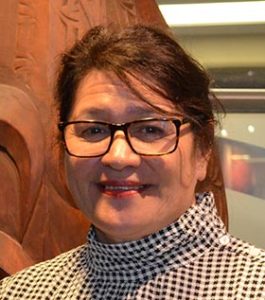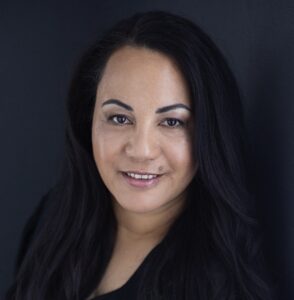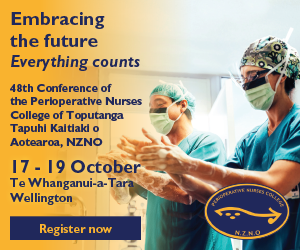
The title of this piece is a reference that perhaps some Māori nurses may be familiar with. I’m not sure of the practices in other iwi around the motu, but where I’m from in Kāwhia it is common practice to have a top table at a hui, or a hākari.
In my iwi, Ngāti Hikairo, it refers to the table where our esteemed visitors may sit, often reserved for the Māori King, King Tūheitia, during our Poukai, but equally reserved for the bride and groom at their wedding or Nan and Koro at their wedding anniversary. This table is usually laden with the best and most delicious kai. At our marae during the Poukai, it is served by our rangatahi in their special aprons.
Equally the top table is referred to when doing iwi and marae business, as the table where the marae trustees or the rūnanga executive sit while residing over hui (meetings). A place where our leaders sit.
I have found myself thrust up to the top table (metaphorically speaking), a place where I don’t feel particularly comfortable.
My ruruhi (kuia) once explained to me that you don’t just walk in the back door of the marae and expect to go straight to the top table, but rather you start in the kitchen washing the dishes, peeling the kumara and serving manuwhiri. Then, when the time is right, you are expected to move to the front and eventually, one day, may be asked to sit at the top table.

In the Māori world, it is often through the kumara vine that things can happen. Someone tells someone, who then tells someone else and the next thing your aunty is in your ear about a kaupapa that she thinks you should be involved in. This was kind of the situation I found myself in, although it was not my aunties in my ear, but my mentors and peers who suggested it was time I moved to the top table.
I have never been particularly ambitious during my career, just rolling wherever things happened to take me, much preferring to be at the coalface of nursing. With my recent decision (and with lots of encouragement) to begin PhD study, I have found myself thrust up to the top table (metaphorically speaking), a place where I don’t feel particularly comfortable.
So here I was, sitting at nursing’s equivalent of “the top table”, (well one of them), a zoom hui with a variety of nursing leaders from across the country. Now I’m a simple sort of nurse, and tend to use simple words to explain myself, and sometimes I forget and get carried away expressing myself in the Māori way (in case you haven’t noticed — it’s often through long descriptive narratives), while everyone patiently waits for me to get to my point. So, I have to admit initially I found the environment intimidating, but I am getting used to it now.
Do what you need to do to get you in the right places, and kaua e whakamā, don’t be shy. We need you, our future nursing workforce needs you.
The roopu I find myself in is the National Nursing Pipeline Working Group, a collaboration of nurse leaders from across Aotearoa, looking into how we can increase our nursing workforce in a crucially meaningful way and (hopefully) quickly. I am there representing Whārangi Ruamano (the Māori nurse educators and academics group). For someone who never particularly aspired to leadership in nursing, preferring the flax roots reality, it is a little daunting that I find myself in this situation.

But whether it was my mentors and peers in my ear or my tūpuna on my shoulders, I am where I am supposed to be. You see, my PhD research is about examining the Māori nursing workforce, particularly understanding why the Māori nursing workforce has remained static at 6-7.5 per cent of the registered nursing workforce for 40 years.
I am privileged to sit in this group with many nursing leaders, three of which are Māori – including Kerri Nuku, the kaiwhakahaere of NZNO, and Lorraine Hetaraka, the chief nurse for the Ministry of Health. Both of these Māori nurse leaders are representing all nursing at a national level — a significant achievement when considering our Māori nursing workforce numbers.
Nursing pipeline working group
The priority of the Nursing Pipeline Working Group is to collectively progress improvements to the nursing pipeline in New Zealand and to support the nursing workforce’s ability to meet current and future challenges1. Through this, a number of key initiatives have been identified:
- Working with the education providers to identify the reasons why students are not completing their studies, with a special focus on those leaving in both the first and third years of study.
- Working in partnership with Māori and Pacific nurse leaders and education providers to identify how, as a sector, we can be more responsive to factors affecting the retention of Māori and Pacific nursing students.
- Looking at options for an enrolled nursing pathway to complete bachelor-level nursing programmes.
- Looking at options for a pathway to enrolled nursing for those who leave the bachelor of nursing programme.
- Supporting and assisting the Aged Residential Care Workforce Plan.
- Strategic review of the NETP/NESP Programme as it transitions to Health NZ.
- Nursing recruitment campaign.
- National review of the clinical placement model.
My contribution to the pipeline roopu is prioritising Māori nursing workforce needs. Having undertaken a literature review as part of my PhD study, I have become very familiar with existing research and knowledge. As part of the second initiative – to work in partnership with Māori and Pacific leaders on retaining Māori and Pacific nursing students — a discussion document was provided to the pipeline group2, outlining the many factors that have contributed to Māori student attrition and ultimately the stagnant state of the Māori nursing workforce. Included in the discussion document were recommendations that could make meaningful differences to the Māori nursing workforce, all of which the pipeline group has endorsed and plans to initiate.
That sense that I have received an ‘invitation to a party’ but I am convinced there has been a mistake and that the invitation actually wasn’t intended for me.
I believe what we have recommended is achievable and am cautiously optimistic that the response will see some serious action to address the inequity in the Māori nursing workforce. But I know I have good reason to be cautious, because for the last 40 years our Māori nurse leaders have consistently spoken out in their desire for change, and it has all seemingly fallen on deaf ears.
So, you can’t blame me for having that niggling feeling that perhaps I am being naive. I know many of you will be familiar with that constant sense of marginalisation — it is a hard habit to shake, even when surrounded by those with the best intentions.
More Māori nurses wanted at the table
Recently the National Nursing Pipeline Working Group sent out a letter to Māori nursing roopu seeking more Māori nurses to participate in the various working groups that have been established around each initiative. I encourage Māori nurses to join me and get in involved3, especially if it’s a kaupapa that you are passionate about.
This leads me back to the point of this kōrero — I want to encourage more Māori to consider their career pathways and be ambitious. To you Māori nurses out there, who perhaps like me, have been a little resistant or reluctant to move themselves forward or to take on leadership roles, consider the following fact. When you examine the innovation and leadership in Māori health, you will see Māori nurses have consistently been at the forefront.
Now I’m a simple sort of nurse, and tend to use simple words to explain myself, and sometimes I forget and get carried away expressing myself in the Māori way
When I reflect on the number of incredible Māori nursing students that I have had the pleasure to teach during my time as a nurse lecturer on the bachelor of nursing programme here in Te Taitokerau, and how talented and intelligent and amazing they are, I think about their leadership potential and what incredible nursing leaders they will be.
All I can say is, don’t leave it too long (like me), be ambitious, make goals and aspire to be the leaders, because it is you that will make things better. Do what you need to do to get you in the right places, and kaua e whakamā, don’t be shy. We need you, our future nursing workforce needs you.
Getting over ‘imposter syndrome’
I must admit that my greatest challenge has been getting over the “imposter syndrome” I experience when asked to step up — that sense that I have received an “invitation to a party” but I am convinced there has been a mistake and that the invitation actually wasn’t intended for me. When I reflect on my career and experiences, I realise that I have often felt this way, and there is no doubt that this is linked to the racism and bias I have experienced throughout my career. And if I am truly honest with myself, I have allowed it to hold me back, not to put myself out there, allowing it to reinforce the sense of my being an “imposter”. My advice to potential Māori nurse leaders who may feel the same way – recognise it, acknowledge it, and push through, haere tonu!
But I know I have good reason to be cautious, because for the last 40 years our Māori nurse leaders have consistently spoken out in their desire for change, and it has all seemingly fallen on deaf ears
We are on the cusp of significant change in the health system, in the nursing workforce and also in nursing education. Nō reira, ko tēnei aku whakaaro, we have entered through the back door, we have dried enough dishes and peeled enough kumara, we have served enough manuwhiri, our kuia nurse leaders have tapped us on the shoulder and whispered in our ear that we need to move up to the front and take our place at the top table. I think it’s time to do as we are told.
Heoi anō, ki a tatou nga tapuhi Māori, kia kaha, kia maia, kia manawanui.
Pipi Barton (Ngāti Hikairo ki Kāwhia) RN, MPhil(nursing), is a nursing lecturer at NorthTec and a PhD student at AUT.
- See also Increase nurse workforce now.
References
- TAS. (2022). The nursing pipeline programme.
- Barton, P., Lord, R., & Hetaraka, L. (2021). Responding to Māori student nurse attrition rates: A summary of research and recommendations for the Nursing Pre-Registration Pipeline Working Group.
- Contact Rebecca Kay at [email protected]



